
A surcoat or surcote initially was an outer garment commonly worn in the Middle Ages by both men and women in Western Europe. It can either refer to a coat worn over other clothes or the outermost garment itself. The name derives from French meaning "over the coat", a long, loose, often sleeveless coat reaching down to the feet.

A tunic is a garment for the body, usually simple in style, reaching from the shoulders to a length somewhere between the hips and the knees. The name derives from the Latin tunica, the basic garment worn by both men and women in Ancient Rome, which in turn was based on earlier Greek garments that covered wearers' waists.

1860s fashion in European and European-influenced clothing is characterized by extremely full-skirted women's fashions relying on crinolines and hoops and the emergence of "alternative fashions" under the influence of the Artistic Dress movement.

1830s fashion in Western and Western-influenced fashion is characterized by an emphasis on breadth, initially at the shoulder and later in the hips, in contrast to the narrower silhouettes that had predominated between 1800-1820.
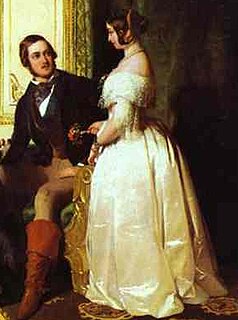
1840s fashion in European and European-influenced clothing is characterized by a narrow, natural shoulder line following the exaggerated puffed sleeves of the later 1820s and 1830s. The narrower shoulder was accompanied by a lower waistline for both men and women.

Fashion in the period 1550–1600 in Western European clothing was characterized by increased opulence. Contrasting fabrics, slashes, embroidery, applied trims, and other forms of surface ornamentation remained prominent. The wide silhouette, conical for women with breadth at the hips and broadly square for men with width at the shoulders had reached its peak in the 1530s, and by mid-century a tall, narrow line with a V-shaped waist was back in fashion. Sleeves and women's skirts then began to widen again, with emphasis at the shoulder that would continue into the next century. The characteristic garment of the period was the ruff, which began as a modest ruffle attached to the neckband of a shirt or smock and grew into a separate garment of fine linen, trimmed with lace, cutwork or embroidery, and shaped into crisp, precise folds with starch and heated irons.

Fashion in the years 1750–1775 in European countries and the colonial Americas was characterised by greater abundance, elaboration and intricacy in clothing designs, loved by the Rococo artistic trends of the period. The French and English styles of fashion were very different from one another. French style was defined by elaborate court dress, colourful and rich in decoration, worn by such iconic fashion figures as Marie Antoinette.
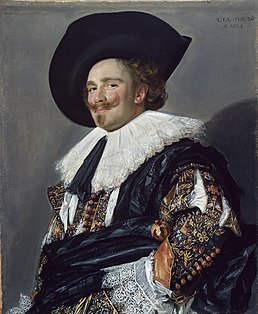
Fashion in the period 1600–1650 in Western European clothing is characterized by the disappearance of the ruff in favour of broad lace or linen collars. Waistlines rose through the period for both men and women. Other notable fashions included full, slashed sleeves and tall or broad hats with brims. For men, hose disappeared in favour of breeches.

During the 1820s in European and European-influenced countries, fashionable women's clothing styles transitioned away from the classically influenced "Empire"/"Regency" styles of c. 1795–1820 and re-adopted elements that had been characteristic of most of the 18th century, such as full skirts and clearly visible corseting of the natural waist.
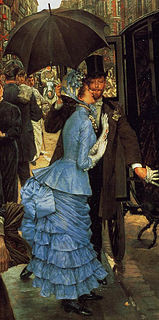
Fashion in the 1880s in Western and Western-influenced countries is characterized by the return of the bustle. The long, lean line of the late 1870s was replaced by a full, curvy silhouette with gradually widening shoulders. Fashionable waists were low and tiny below a full, low bust supported by a corset. The Rational Dress Society was founded in 1881 in reaction to the extremes of fashionable corsetry.

Fashion in the period 1500–1550 in Western Europe is marked by voluminous clothing worn in an abundance of layers. Contrasting fabrics, slashes, embroidery, applied trims, and other forms of surface ornamentation became prominent. The tall, narrow lines of the late Medieval period were replaced with a wide silhouette, conical for women with breadth at the hips and broadly square for men with width at the shoulders. Sleeves were a center of attention, and were puffed, slashed, cuffed, and turned back to reveal contrasting linings.

A houppelande or houpelande is an outer garment, with a long, full body and flaring sleeves, that was worn by both men and women in Europe in the late Middle Ages. Sometimes the houppelande was lined with fur. The garment was later worn by professional classes, and has remained in Western civilization as the familiar academic and legal robes of today.
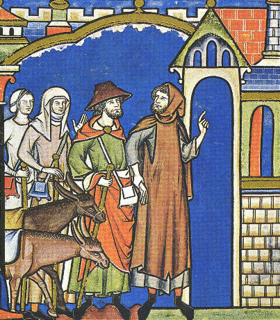
Costume during the thirteenth century in Europe was very simple for both men and women, and quite uniform across the continent. Male and female clothing were relatively similar, and changed very slowly, if at all. Most clothing, especially outside the wealthier classes, remained little changed from three or four centuries earlier. The century saw great progress in the dyeing and working of wool, which was by far the most important material for outerwear. For the rich, colour and rare fabrics such as silk from the silkworm was very important. Blue was introduced and became very fashionable, being adopted by the Kings of France as their heraldic colour.

Twelfth century European fashion was simple and differed only in details from the clothing of the preceding centuries. Men wore knee-length tunics for most activities, and men of the upper classes wore long tunics, with hose and mantle or cloaks. Women wore long tunics or dresses. A close fit to the body, full skirts, and long flaring sleeves were characteristic of upper-class fashion for both men and women.
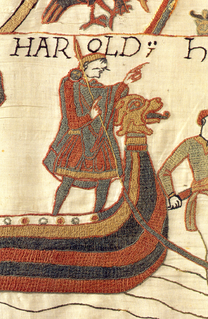
Anglo-Saxon dress refers to the clothing and accessories worn by the Anglo-Saxons from the middle of the 5th century through the eleventh century. Archaeological finds in Anglo-Saxon cemeteries have provided the best source of information on Anglo-Saxon costume. It is possible to reconstruct Anglo-Saxon dress using archaeological evidence combined with Anglo-Saxon and European art, writing and literature of the time period. Archaeological finds have both supported and contradicted the characteristic Anglo-Saxon costume as illustrated and described by these contemporary sources.
The Medieval period in England is usually classified as the time between the fall of the Roman Empire to the beginning of the Renaissance, roughly the years AD 410–1485. For the various peoples living in England, the Anglo-Saxons, Anglo-Danes, Normans and Britons, clothing in the medieval era differed widely for men and women as well as for different classes in the social hierarchy. The general styles of Early medieval European dress were shared in England. In the later part of the period men's clothing changed much more rapidly than women's styles. Clothes were very expensive and both the men and women of lower social classes continued to wear them until the garments were in such disrepair that they needed to be replaced entirely. Sumptuary laws also divided social classes by regulating the colours and styles these various ranks were permitted to wear.

The history of Italian fashion is a chronological record of the events and people that impacted and evolved Italian fashion into what it is today. From the Middle Ages, Italian fashion has been popular internationally, with cities in Italy producing textiles like velvet, silk, and wool. During the Middle Ages and Renaissance, Italian fashion for both men and women was extravagant and expensive, but the fashion industry declined during the industrialization of Italy. Many modern Italian fashion brands were founded in the late 19th and early 20th centuries, and in the 1950s and 1960s, Italian fashion regained popularity worldwide. While many clients of Italian fashion designers are celebrities, Italian fashion brands also focus on ready-to-wear clothes.

Ancient Egyptian clothes refers to clothing worn in ancient Egypt from the end of the Neolithic period to the collapse of the Ptolemaic Kingdom with the death of Cleopatra in 30 BC. Egyptian clothing was filled with a variety of colors. Adorned with precious gems and jewels, the fashions of the ancient Egyptians were made for not only beauty but also comfort. Egyptian fashion was created to keep cool while in the hot desert.

Fashion in the twenty years between 1775–1795 in Western culture became simpler and less elaborate. These changes were a result of emerging modern ideals of selfhood, the declining fashionability of highly elaborate Rococo styles, and the widespread embrace of the rationalistic or "classical" ideals of Enlightenment philosophes.





















